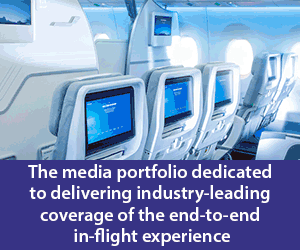
Panasonic Avionics Corporation will be expanding its global connectivity network by adding new and expanded geostationary (GEO) Ku-band satellite capacity.
The expanded network will be delivering higher-speed in-flight internet connections on board flights. The company says it is adding new High Throughput Satellites (HTS) and Extreme Throughput Satellites (XTS) to its network, enhancing coverage over North, Central and South America, the North and South Atlantic Ocean, Europe, the Middle East, Arabian Sea, Africa and the Indian Ocean.
It is also introducing additional HTS capacity over China and Japan and says this builds on existing connectivity investments in this region.
The expansion will provide a 50% global capacity increase, accelerated speed of up to 75 Mbps per aircraft through HTS and up to 200 Mbps through XTS satellites as well as broadened network coverage.
The company says its phased deployment plan is in place and is planned for completion by the end of 2023.
John Wade, Vice President of Panasonic Avionics’ In-flight Connectivity Business Unit, said: “For the past few years, we have seen exponential growth in the adoption of in-flight connectivity. Passengers want faster internet speeds for traditional services like email, web browsing, social media and messaging, and they are increasingly looking to stream content, play games in flight, and use collaborative cloud-based applications. This major expansion of our global connectivity network will ensure that Panasonic Avionics consistently exceeds the growing demand for these kinds of enhanced in-flight experiences.
“Given our unique approach to satellite capacity, and with our multi-layered, multi-orbit connectivity network, Panasonic Avionics has the unique ability to leverage a wide range of different, industry leading satellites, rather than the high-risk approach of relying solely on proprietary satellite technology. This enables Panasonic Avionics to add new capacity quickly and easily when and where it’s needed, ensuring we can deliver an advanced and virtually uninterrupted service. The result is a better experience for passengers and higher Net Promoter Scores (NPS) for airlines.”





